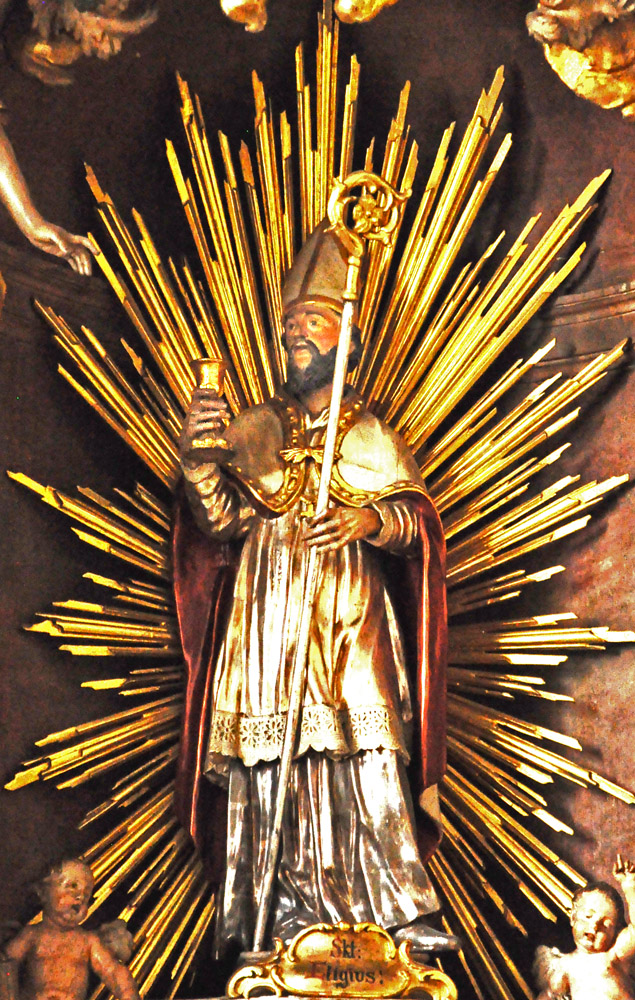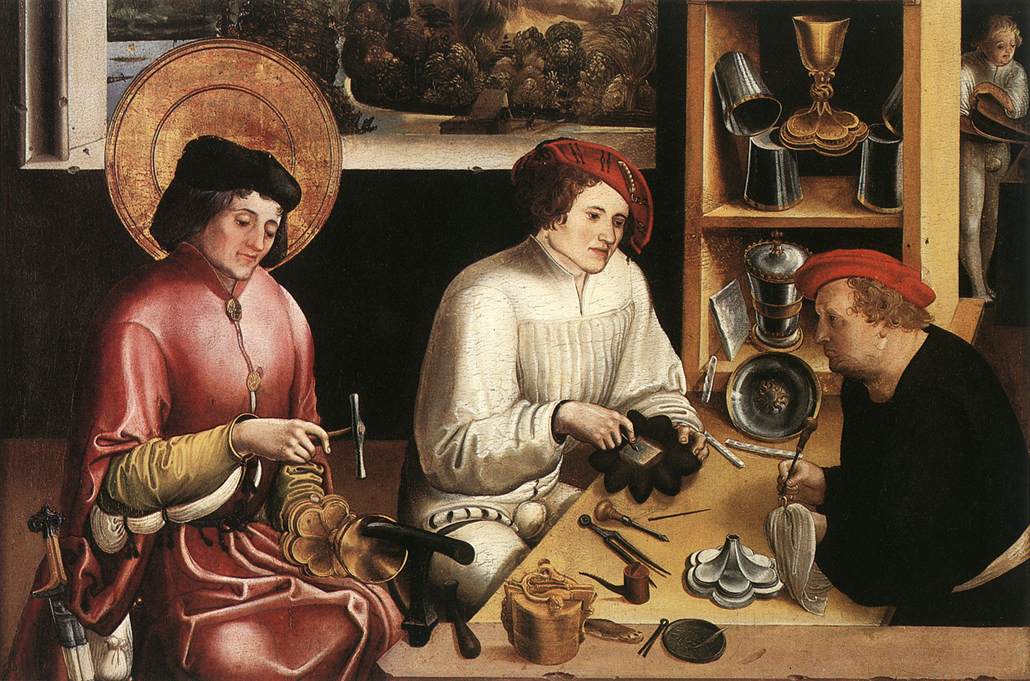Some portraits have St. Eligius hold a golden chalice as a symbol of his original profession or show him plying his trade in a workshop, as in the first and second pictures at right.
According to a number of secondary sources there was an alternate legend in which Eligius started out as a farrier who one day "cut off a horse's hoof to shoe it with greater ease; once the work was done, he simply replaced the whole hoof."3 This episode is the usual subject of narrative images (example). It also leads to portraits that use the hoof and the farrier's tools as attributes, as in the third picture at right. Yet the legend is not in Dado or any medieval source that I could locate. Perhaps it arose from the ancient custom that put blacksmiths, goldsmiths, and monetarii in the same category.
Duchet-Suchaux (ibid.) writes that Eligius is also sometimes shown pinching the devil's nose (example), resuscitating a hanged man, or advising Chlothar or Dagobert.
Dado's vita provides a detailed physical description of Eligius:
He was tall with a rosy face. He had a pretty head of hair with curly locks. His hands were honest and his fingers long. He had the face of an angel and a prudent look. At first, he was used to wear gold and gems on his clothes… [But] as he proceeded to perfection, he gave the ornaments for the needs of the poor. Then you would see him, whom you had once seen gleaming with the weight of the gold and gems that covered him, go covered in the vilest clothing with a rope for a belt.
Prepared in 2014 by Richard Stracke, Emeritus Professor of English, Augusta University, revised 2015-10-30, 2018-04-04.

St. Eligius as a bishop with a chalice, one of his attributes (See the description page)

St. Eligius as an apprentice at work on a chalice in Abbo's workshop (See the description page.)

Portrait of St. Eligius with the horse's leg and farrier's hammer (See the description page)
ATTRIBUTES
- Foreleg of a horse
- Chalice
- Hammer
DATES
- Feast day: December 1
- Lived circa 590-659
NAMES
- This is the "Seinte Loy" by whom Chaucer's Prioress swears (Canterbury Tales, I, 120).
BIOGRAPHY
- William Caxton's Life of St. Eligius: html or pdf
- Dado of Rouen's Life of St. Eligius in English and in Latin in MHG: Scriptores Rerum Merovingicarum, IV, 634-741
- "Inventio Reliquiarum S. Eligii, anno 1183," Analecta Bollandiana, IX, 423-436.
NOTES
1 Krusch, 642.
2 A sella, the term used in Dado and in the Golden Legend, is defined in Lewis and Short as a chair or magistrate's seat, and the Medieval Sourcebook translation makes it a "seat.", but in Caxton it is a "saddle."
3 Duchet-Suchaux (132-33). The alternative account is also alluded to in Butler and Molanus, but I find no trace of it in the accounts in Dado, the Golden Legend, or the breviary.